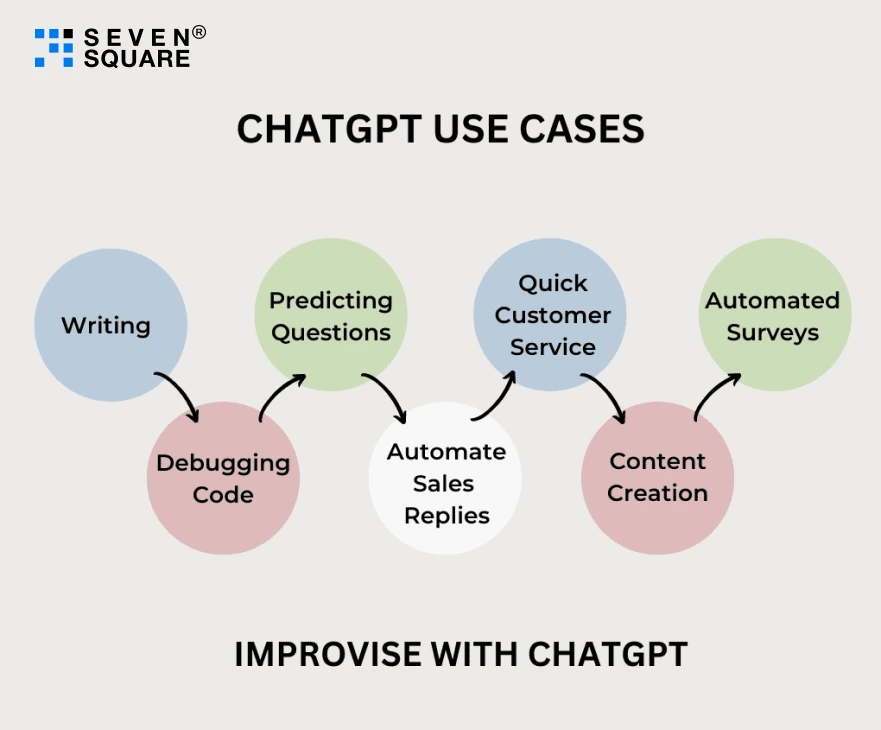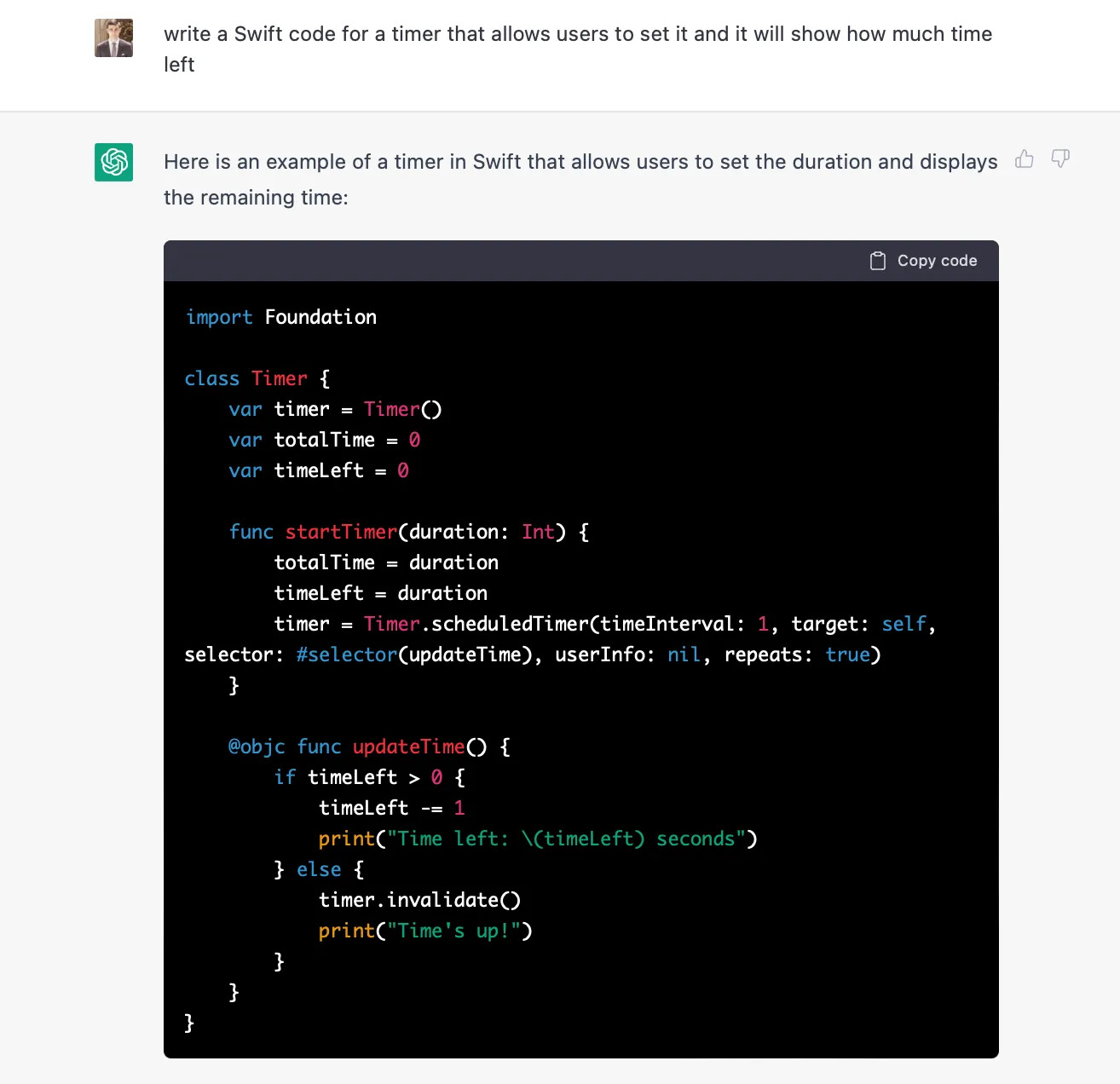Quick Summary: Needless to say, AI is on its way to conquering the whole tech world—such a dramatic sentence, isn’t it? But the truth of the future of technology might revolve around this. From chatbots on websites to Alexa and Siri, real-time use cases of AI have been rapidly increasing over the past few years.
The world is now experiencing a sudden fervor for conversational AI, which has been driven by the success of ChatGPT. Let’s dig deeper into the actual meaning of what ChatGPT is and know all the ins and outs of it.
Let’s get obvious out of the way.
What is ChatGPT?
ChatGPT (Chat Generative Pre-trained Transformer) is a chatbot launched by OpenAI in November 2022. It aims to eliminate issues with traditional chatbot methods while adding a personal human touch to the entire process.
It is built on top of OpenAI’s GPT-3 family of large language models and calibrated with refined learning techniques.
ChatGPT is trained using Reinforcement Learning from Human Feedback (RLHF), the same as InstructGPT, with a different data collection setup.
Human AI trainers had access to model-written suggestions to help them compose their responses. This dialogue dataset was then mixed with the InstructGPT dataset.
How does ChatGPT work?
ChatGPT works with different AI-based models to generate more personalized responses in the form of conversations and dialogues. Its RLHF model continuously learns from the feedback received from the human end.
ChatGPT works with three different models.
1. The Supervised Fine-Tuning (SFT) Model
In this model, everything starts with collecting demonstration data to train a supervised policy model.
- Data Collection: Data or the expected output of a query is requested and then collected from the user. with the help of two different sources of prompts: some of them are prepared directly by the labelers and developers, and some are directly requested from OpenAPI’s API request, the generated cluttered data will be fine-tuned with another model.
- Choice of Model: ChatGPT developers decided to implement a fine-tuning model directly on top of the “code model” rather than a pure text model.
2. The Reward Model (RM)
This model gives a ranking to the outputs generated by the SFT model. RM strongly reflects the preferences of the selected group of human labelers and the agreed-upon standard guidelines.
- SFT-generated outputs are collected.
- Labelers rank the outputs from best to worst. This dataset is 10 times larger than the output generated by the SFT.
- This dataset is used to train a reward model (RM). This model takes as input a few set model outputs and ranks them in order.
3. Fine-tune the SFT model via Proximal Policy Optimization
The output of the higher priorities is now to be fine-tuned by following the principle of PPO (Proximal Policy Optimization).
PPO is an algorithm that is used to train reinforcement learning agents.
This algorithm uses the “trust region optimization method” to update the current policy with changes that are made within a certain distance of the previous policy for stable results.
Then the expected results and the current results are compared using the value function.
After this process, the advantage function is used on the generated results to update the policy.
After knowing how the output is generated in ChatGPT, let’s discuss the use cases in which you can work with ChatGPT.
UseCases of ChatGPT

Writing:
ChatGPT can help writers, marketers, businesses, influencers, and students write with auto-generated unique content.
Debugging code:
The use of ChatGPT with any code editor helps developers debug the code and fix the issues in the code. ChatGPT’s extension for VSCode is also available and known as CodeGPT.
Predicting Questions:
With the correct command from the user, ChatGPT can help you find the most relevant and predicted questions according to the subject.
Provide customer service:
Enable customer care representatives to respond to consumer inquiries rapidly. Create customer service scripts automatically to assist agents in responding to consumer inquiries.
Produce product reviews:
Using feedback from customers, produce reviews of products automatically.
Create content for social media:
Create content for social media postings automatically.
Produce marketing copy:
Use automated marketing copy creation to advertise goods and services.
Automated Surveys:
Create client surveys automatically to get feedback from your customers.
Auto-Generate Customer Service Emails & Sales Text:
Create customer service emails automatically to assist customer service representatives in responding to client concerns. With ChatGPT, generate sales text automatically to assist sales teams in closing deals.
What are the benefits of ChatGPT?
There are many advantages to using ChatGPT. Such as
1. More Efficiency: ChatGPT helps automate conversations, which frees up time for employees to focus on other important tasks. This results in increasing the overall efficiency of the organization.
2. Improved Customer Experience: It helps to improve the customer experience by automating conversations and providing customers with quicker and more accurate responses.
3. Cost Savings: Reduce costs associated with customer service by automating conversations and eliminating the need to hire and train more customer service agents.
4. Increased Engagement: ChatGPT helps engage customers in conversations, which helps build relationships and trust. This helps improve customer loyalty and engagement.
5. Scalability: It helps in scaling customer service operations by allowing customers to interact with automated bots instead of human agents. This allows for the expansion of customer service operations without the need for additional staff.
6. Quick Response Time: With ChatGPT, businesses can automate the response process with auto-generated email replies and customer service emails. Also, by integrating OpenAI’s API into your website, you can assist your customers immediately.
How can ChatGPT be used for app development?
ChatGPT can greatly help app development, from app ideas to ready-made app code. This will improve the development efficiency of developers.
App Ideas: Ask ChatGPT to suggest ideas for you and it can help you with some good app ideas and concepts.
One can ask ChatGPT to create the information architecture for the app

ChatGPT can suggest color schemes and font families for your app, too!

ChatGPT can give you the code for specific functionalities in your app.

Limitations of ChatGPT
It’s like “Ain’t no rainbow without rain.”
Everything has two sides, just like a coin, ChatGPT has its other side too. Let’s discuss the limitations of ChatGPT one by one:
- ChatGPT can not generate content like a human expert would. The emotion, slang, idioms, examples, pauses, and personalization—these factors are missing in the content generated by ChatGPT.
- One can not always rely on the ChatGPT answers, as there is no guarantee of 100% correct information. It is trained on reinforcement learning algorithms that update the information based on human response. So we can say that ChatGPT is not a fully credible resource to rely on.
- ChatGPT sometimes writes plausible-sounding but incorrect or nonsensical answers.
- ChatGPT is still unable to solve the puzzle inputs.
- It can’t generate visual outputs.
and many more. So the next question is should I use it or not, Let’s dive into that now!
Should you really use ChatGPT as a development partner?
There’s nothing wrong with using ChatGPT as a development partner. There is a VSCode extension of ChatGPT known as CodeGPT.
ChatGPT can be used to generate generic function codes, perform quality assessment tests, debug existing codes, etc.
But you should not forget that ChatGPT is not 100% reliable, and studies also prove that it does not generate code itself; it just shows you the code written in some content or whatsoever.
This code can be outdated too because every technology, every framework, and every library keeps updating their versions, which results in the problem of outdated code capabilities.
So, yes, you can surely use ChatGPT as a development partner that will do some generic tasks for you, but you cannot completely rely on it.
How does Seven Square approach the arrival of ChatGPT?
Well, ChatGPT is awesome—that’s an undeniable fact. We surely believe that ChatGPT can help us in many ways.
This will only help us deliver our projects faster. As mentioned in the benefits of ChatGPT, it will increase the efficiency of our development team, sales team, and marketing team as an organization. This results in quicker project deliveries and more effective client communication. So, why not? Right?

Well, we cannot completely rely on ChatGPT as a development company. We understand how critical it is to maintain the security and stability of the app or web project we develop and launch.
Also, the code generated with the help of any AI tool is not necessarily updated, which can turn out to be outdated. AI-generated code will not give our clients the perfection they expect from us, and we solely believe in delivering high-quality products.
For the customization part and to turn our client’s vision into reality, we believe that the human touch is important during the designing, development, and testing phases, and nothing can replace that.
We are a software development company with a vision to accelerate innovation and business in this technology-driven world. Our aim is to help our clients by being their technical partners to grow their businesses through our software solutions.
Hire dedicated developers for your next project with Seven Square Technosoft!
FAQs
- ChatGPT runs on a language model called GPT (Generative Pre-trained Transformer).
- It predicts and generates responses based on your input to make it highly interactive and versatile.
- Its ability to provide human-like responses makes ChatGPT popular.
- Businesses like its potential for automation, and users find it helpful for learning, creativity, and productivity.
- Yes, ChatGPT can automate customer support, simplify communication, improve content creation, and help with market research. It is an efficient way to save time and improve productivity.
- ChatGPT is highly capable but it can occasionally provide incorrect and outdated information.
- Sometimes it can struggle to handle highly technical queries.
- ChatGPT uses machine learning to generate dynamic and relevant responses. It learns from vast datasets to make it more conversational and flexible.